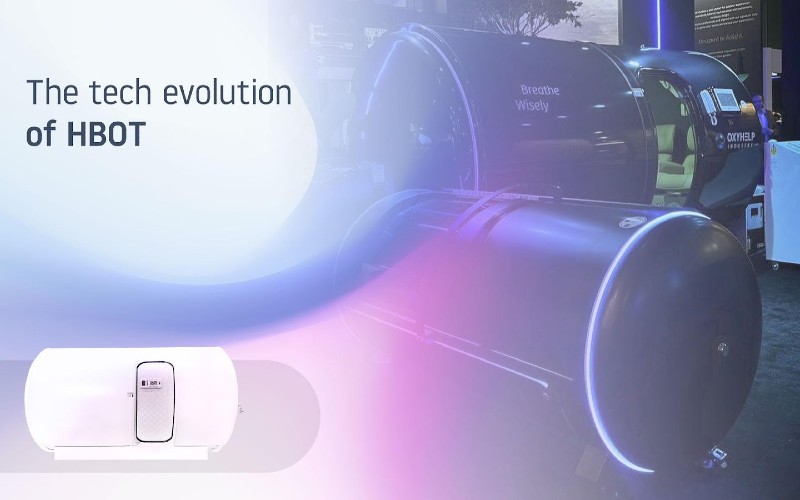Few fields, in the realm of innovation have experienced as dynamic. Transformative a journey as Hyperbaric Oxygen Therapy (HBOT). This cutting edge treatment, which harnesses the power of oxygen chambers is, at the forefront of the evolution of technology offering new avenues of hope and healing.
At its core HBOT revolves around the utilization of oxygen chambers. A technology that has seen advancements over time. These chambers, also referred to as hyper chambers or oxygen hyperbaric chambers create an environment where patients can breathe oxygen under increased pressure. This scientifically. Simple process enhances the bodys natural healing abilities.
The science, behind oxygen therapy (HBOT) is truly captivating. When a patient goes into a hyperbaric chamber the heightened pressure enables an amount of oxygen to dissolve into the bloodstream. This abundance of oxygen in the blood can expedite the healing process for tissues and organs making HBOT an efficient treatment option, for conditions.
Technological Innovations in Hyperbaric Chambers
The evolution of hyperbaric technology is a tale of engineering ingenuity. Modern hyperbaric chambers are not just about delivering oxygen; they are about doing so in the most efficient, safe, and patient-friendly manner. Innovations in chamber design, control systems, and safety protocols have transformed these devices from bulky, intimidating units into sleek, sophisticated, and accessible treatment options.
- Enhanced Safety Features: Modern chambers are equipped with advanced safety systems, ensuring patient security at every stage of the therapy.
- User-Friendly Interfaces: Touchscreen controls and user-friendly interfaces make the operation of these chambers simpler and more intuitive.
- Customizable Treatment Protocols: Advanced software allows for personalized treatment settings, catering to the unique needs of each patient.
Enhancing Understanding Through Case Studies
The impact and potential of HBOT are further illuminated through various case studies and research. A study published in NCBI delves into the effectiveness of HBOT in enhancing cognitive functions in older adults. This research highlights how HBOT can induce significant cognitive improvements, showcasing the therapy’s potential beyond traditional wound healing applications.
A different research paper, available, on NCBI explores the utilization of oxygen therapy (HBOT) for improving brain repair and neuroplasticity. This study presents convincing evidence of how HBOT enhances brain function after an injury. It emphasizes that patients who underwent HBOT experienced enhancements in abilities, which can be attributed to improved neuroplasticity and brain repair mechanisms. This investigation not highlights the potential of HBOT in rehabilitation but also suggests its possible application, for other brain related conditions.
The Role of Technology in Advancing HBOT
As we explore further into the advancements of HBOT technology it becomes crucial to grasp the basis that underlies these innovations. Another important piece of literature available, through the National Center for Biotechnology Information offers an overview of the mechanisms and applications of oxygen therapy. This in depth guide delves into the impacts of oxygen on the body, such as improved wound healing, anti inflammatory effects and better infection control. Additionally it examines a range of conditions that can benefit from HBOT, including chronic wounds and acute ischemic conditions. This resource stands as evidence for the foundation supporting the technological progress, in HBOT.
Integrating HBOT into Diverse Medical Fields
The applications of oxygen therapy go beyond its traditional uses. Nowadays HBOT is being incorporated into fields with each field leveraging the unique advantages of hyperbaric oxygen. For example in sports medicine athletes are utilizing HBOT to expedite their recovery, from injuries by promoting healing.
Neurologists are also investigating the potential of HBOT in treating conditions such, as stroke and traumatic brain injuries as increased oxygen levels can assist in repairing brain tissue. Additionally within reconstructive surgery the enhanced oxygenation provided by HBOT has shown promising results in improving surgical outcomes and reducing recovery durations.
The Role of Technology in Personalizing HBOT
The customization of HBOT treatment is a breakthrough, in the field. Advanced hbot chambers now come with technology that enables treatments to be personalized according to each patients needs. This personalization is achieved by adjusting pressure settings controlling oxygen levels and even using health data to monitor and adapt treatments in time. These technological advancements guarantee that every HBOT session is optimized for the results specifically addressing each patients unique medical needs.
Expanding Accessibility and Awareness
As the technology, behind oxygen chambers continues to advance so does the availability of HBOT. In the past this treatment was primarily offered in facilities. However thanks to the development of user friendly chambers it is now becoming more common in various settings. Not can you find HBOT in hospitals and clinics. Also in wellness centers and even homes making it easier than ever to access this therapy.
With this increased accessibility comes a growing recognition of the benefits of HBOT. Ongoing research, patient testimonials and support from the community have all contributed to raising awareness about its potential. As more people discover the advantages of HBOT there will likely be a demand, for these treatments. This increasing demand will further fuel innovation and advancements within this field.
The Future of HBOT: A Convergence of Technology and Healthcare
In the coming years the future of oxygen therapy holds potential and exciting opportunities. The merging of technology and healthcare will push HBOT into territories as ongoing studies explore its range of applications and benefits. The advancements, in chamber technology such as incorporating reality for patient comfort and advanced monitoring systems for treatments are just scratching the surface. As we continue to uncover the capabilities of HBOT it serves as an example of how technology can revolutionize medicine by providing fresh hope and healing options to patients worldwide.
As we gaze into the future the trajectory of HBOT and hyperbaric technology is poised for ascent. Research and development in this field assure refined, efficient and accessible hyperbaric solutions. This progress extends beyond improving the chambers themselves; it encompasses integrating these technologies into healthcare systems establishing them as indispensable components in treatment protocols, across the globe.
Conclusion:
The evolution of oxygen therapy (HBOT), from its origins to its current state as an advanced medical treatment showcases the remarkable impact of healthcare innovation. As we delve deeper into the possibilities of HBOT it serves as a symbol of optimism and advancement in the field presenting opportunities for healing and recuperation. The intersection of technology, medicine and patient well being in relation to HBOT isn’t merely a glimpse, into healthcares future; rather it is a reality that is unfolding before our eyes today.


